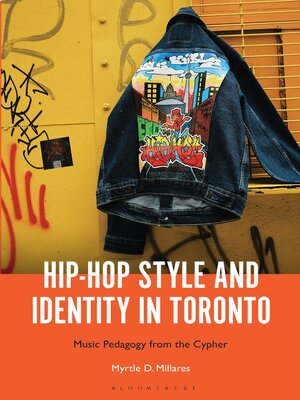
Sign up to save your library
With an OverDrive account, you can save your favorite libraries for at-a-glance information about availability. Find out more about OverDrive accounts.
Find this title in Libby, the library reading app by OverDrive.



Search for a digital library with this title
Title found at these libraries:
| Library Name | Distance |
|---|---|
| Loading... |
What happens when Hip-Hop's African American origin story travels around the world and lands in Toronto, Ontario, Canada?
Set amidst Toronto's increasingly inter-cultural communities, B-boy Jazzy Jester, MC LolaBunz, and DJ Ariel detail the trajectories of their artistic development, honoring Hip-Hop's translocated history while remixing hip-hop cultural perspectives to assert difference as style.
By living with and traversing the web of social imperatives they inhabit, these artists learn to use Hip-Hop's creative tools to produce knowledge and meanings expressed through sound and movement. Stories of migration, Indigenous sovereignty, and intersectional, generational struggle and triumph become resources for identity (re)creation. Through processes of Signifyin(g) (Gates, Jr., 1988) on performative acts (Butler, 1990), artists reveal how hip-hop pedagogy enables aesthetic negotiations that access raw experiences to cultivate dynamic performances. The resulting narrative portraits provide an intimate understanding of the spaces, people, and communities that fill, shape, and nourish the Toronto Hip-Hop scene.
Set amidst Toronto's increasingly inter-cultural communities, B-boy Jazzy Jester, MC LolaBunz, and DJ Ariel detail the trajectories of their artistic development, honoring Hip-Hop's translocated history while remixing hip-hop cultural perspectives to assert difference as style.
By living with and traversing the web of social imperatives they inhabit, these artists learn to use Hip-Hop's creative tools to produce knowledge and meanings expressed through sound and movement. Stories of migration, Indigenous sovereignty, and intersectional, generational struggle and triumph become resources for identity (re)creation. Through processes of Signifyin(g) (Gates, Jr., 1988) on performative acts (Butler, 1990), artists reveal how hip-hop pedagogy enables aesthetic negotiations that access raw experiences to cultivate dynamic performances. The resulting narrative portraits provide an intimate understanding of the spaces, people, and communities that fill, shape, and nourish the Toronto Hip-Hop scene.







